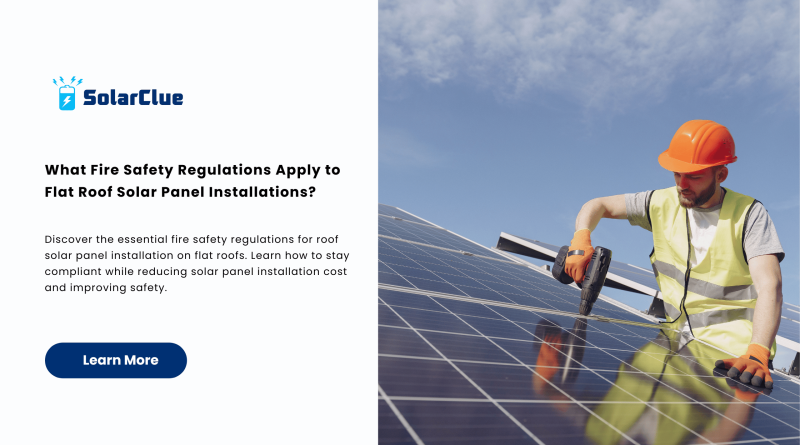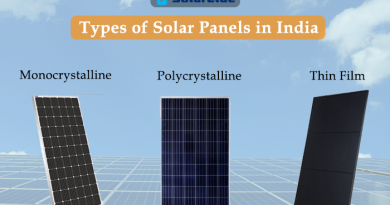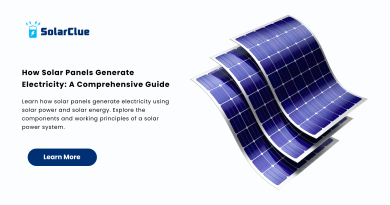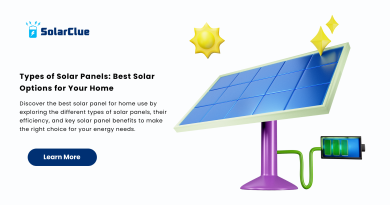What Fire Safety Regulations Apply to Flat Roof Solar Panel Installations?
Flat roof solar panel installation is gaining momentum as property owners look for ways to reduce energy costs and boost sustainability. However, one aspect often overlooked is fire safety. Understanding and adhering to fire safety regulations is crucial for anyone considering solar panel for roof setups, especially on flat surfaces. In this blog, we explore the vital guidelines, standards, and best practices to ensure your roof solar panel installation is not just efficient but also safe.
Table of Contents
- 1 Why Fire Safety Matters in Solar Panel Installations
- 2 Key Fire Safety Regulations for Solar Panels on Flat Roofs
- 3 System Design Considerations to Enhance Fire Safety
- 4 Fire Safety Best Practices During and After Installation
- 5 How Fire Safety Affects Solar Panel Installation Cost
- 6 The Role of Solar Panel Maintenance in Fire Prevention
- 7 Choosing the Best Solar Panel for Safety and Performance
- 8 Industry Case Studies and Real-Life Incidents
- 9 What to Discuss with Your Installer
- 10 Final Thoughts on Fire Safety for Solar Panels
Why Fire Safety Matters in Solar Panel Installations
Fire incidents linked to solar panel systems are rare but not impossible. As solar panel technology expands, so do the risks if installations are not done properly. Poor wiring, overheating, and inadequate system spacing can all lead to serious hazards. Ensuring compliance with fire safety regulations minimizes risks and protects your investment.
Key Fire Safety Regulations for Solar Panels on Flat Roofs
1. Compliance with National Electrical Code (NEC)
The NEC provides the foundation for safe solar panel installation in the U.S. NEC Article 690 focuses on photovoltaic systems and mandates:
- Proper wire management
- Safe circuit sizing
- System disconnects
These codes ensure safe electricity flow and reduce the chance of electrical fires.
2. International Fire Code (IFC) Guidelines
The IFC emphasizes first responder access, especially on flat roofs. It includes regulations such as:
- Clear perimeter pathways
- Spacing between panel arrays
- Access points for fire personnel
Flat roofs must leave at least a 3-foot clearance around the panel area for safety.
3. Building Codes and Local Amendments
Local building codes might have stricter interpretations. Always consult with local authorities to align your roof solar panel installation with community safety expectations.
System Design Considerations to Enhance Fire Safety
4. Proper System Layout
Overcrowding panels can increase overheating risks. Adequate spacing allows heat dissipation and helps prevent fire spread.
5. Use of Fire-Rated Mounting Materials
Opt for mounting systems that comply with UL 2703 or similar fire-rated standards to ensure fire resistance.
6. Quality Inverter and Wiring
The inverter is the heart of your solar panel system. Investing in high-quality components minimizes short circuits and failures that could lead to fires.
Fire Safety Best Practices During and After Installation
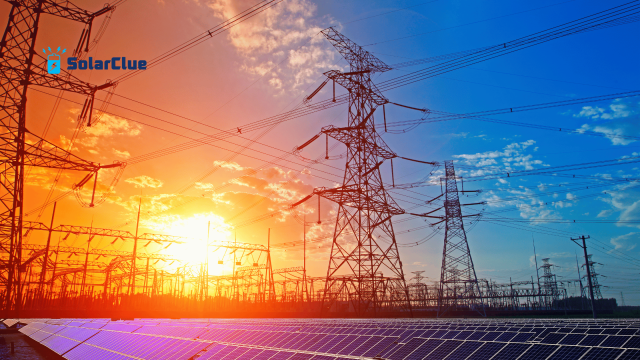
7. Hire Certified Installers
Using certified professionals ensures the installation adheres to fire safety regulations. Professionals know how to route wires safely and mount panels securely.
8. Conduct Routine Inspections
Regular solar panel maintenance includes checking wiring, connections, and structural stability. These checks are vital to identify early fire risks.
9. Install Fire-Resistant Barriers
Fire-resistant membranes between the roof and panels can help control fire spread, especially on commercial flat roofs.
How Fire Safety Affects Solar Panel Installation Cost
10. Budgeting for Safety Equipment
Fire safety components—such as shut-off switches and fire-resistant materials—might increase the solar panel installation cost, but they’re essential.
11. Long-Term Savings from Fire Prevention
Preventing fire risks avoids costly repairs, insurance claims, and downtime. Think of fire safety as an investment rather than an expense.
The Role of Solar Panel Maintenance in Fire Prevention
12. Visual Inspections
Look for discoloration, burn marks, or loose wires. These can be early signs of potential fire hazards.
13. Thermal Imaging
Thermal cameras can detect overheating areas on your roof solar panel system, preventing fire risks before they escalate.
14. Panel Cleaning
Dust and debris can trap heat. Routine cleaning as part of solar panel maintenance improves efficiency and lowers fire chances.
Choosing the Best Solar Panel for Safety and Performance
15. Research Certified Brands
Choose the best solar panel brands with safety certifications like UL 1703. Reliable manufacturers prioritize fire-tested designs.
16. Check Compatibility with Fire Regulations
Ensure the selected solar panel for roof systems meet local fire safety regulations and standards.
17. Consult Experts Before Buying
Before you invest, consult experts via platforms like SolarClue for professional advice tailored to your roof type and locality.
Industry Case Studies and Real-Life Incidents
18. Lessons from Past Fire Events
Analyze incidents where improper roof solar panel installation led to fires. Learning from these can guide safer future designs.
19. Success Stories of Safe Installations
Many businesses and homes have safely integrated flat roof solar panel systems with full fire safety compliance. These examples prove that safety and performance can coexist.
What to Discuss with Your Installer
20. Fire Safety Strategy
Ask your installer about:
- Access pathways
- Fire-resistant materials
- Emergency shutoff protocols
21. Documentation and Compliance Proof
Ensure all permits, certifications, and fire safety documents are provided and stored for future audits.
Final Thoughts on Fire Safety for Solar Panels
Complying with fire safety regulations when installing solar panel for roof on flat surfaces is more than a legal requirement—it’s a vital component of system longevity and personal safety. From choosing the best solar panel to scheduling regular solar panel maintenance, every step contributes to fire risk reduction. Don’t cut corners when it comes to safety—make it a cornerstone of your solar journey.
For expert guidance and high-quality equipment, visit SolarClue. For more tips, updates, and technical insights, check out our blog at blog.solarclue.com.
Make your solar journey not only smart but safe—because the power of the sun should never come with compromise.
FAQs
1. Are flat roofs more susceptible to fire with solar panels?
Not necessarily. With proper design and compliance with fire safety regulations, flat roofs can be as safe as sloped ones.
2. Does solar panel maintenance help prevent fire?
Yes. Routine solar panel maintenance like checking for loose wires and cleaning improves performance and reduces fire risk.
3. What is the safest type of solar panel for roofs?
Panels certified under UL 1703 or newer standards are among the safest. Always choose the best solar panel that matches fire compliance.
4. How much does it cost to add fire safety features to solar systems?
Incorporating fire safety might raise the solar panel installation cost by 5-10%, but it’s worth it in the long run.
5. Can I retrofit fire safety to existing solar installations?
Yes, you can add fire-resistant barriers and conduct system audits to enhance the fire safety of older systems.
Ready to start your solar journey the right way? Head over to SolarClue and get expert help with a smile!

